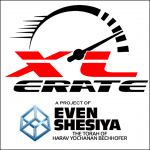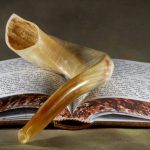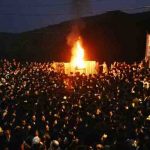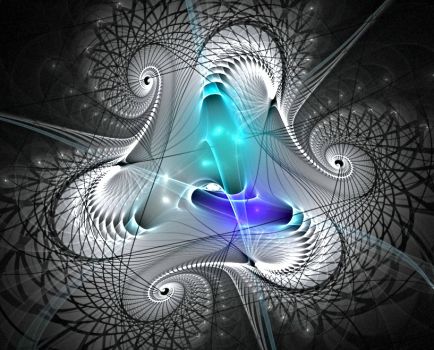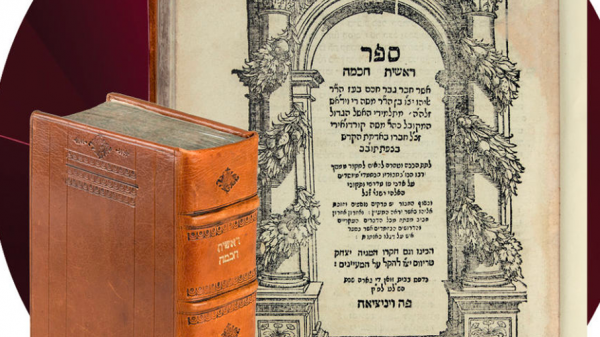Click here to download PDF
Crying on the “Neck”
Following the reunification of the brothers it says that “Yosef cried on the necks (plural!) of Binyomin and Binyomin cried on Yosef’s neck”. Rashi brings the Chazal that raise the question: how many necks did Binyomin have? They answer that it was referring to two Temples that were to be built in the portion of Binyomin because they foresaw that they would be destroyed and Binyomin cried for the Mishkan in Shiloh that was to be built in the portion of Yosef that will be destroyed.
There are three questions to ponder: Why do the necks of Binyomin and Yosef allude to the Temples and Mishkan? Later in the Parsha, When Yosef gets reunited with his father Yaakov it says: “and he cried on his (Yaakov’s) neck more” and Rashi does not feel compelled to explain that it means anything other then what it literally says: that he cried on his father’s neck. Why is it that when Yosef cries on Yaakov’s neck it is to be taken literally but when Yosef and Binyomin cry on each other’s necks it means more than what it literally says, and is also referring to the Temples and Mishkan that were destined to be destroyed? Why should they Yosef and Binyomin be crying over the destructions of the Temples and Mishkan at this time when they should just be experiencing the joy of being reunited?
Eglah Arufa
When the brothers come to Yaakov to tell him the great news that Yosef is still alive it says: “And he (Yaakov) saw the agolos (wagons) Rashi explains that the wagons reminded him of the last thing that he had studied with Yosef before Yosef was sold into slavery. and those were the laws of eglah arufa the calf whose neck is broken in response to finding a murder victim whose murderer is unknown. Was it a coincidence that that’s what they were studying before Yosef parted from the Jewish people for 22 years, or is there a deeper meaning? There is an interesting common denominator between everything we mentioned: the neck! Why is the human neck the metaphor for the Temples and Mishkan and why is the lost life of a Jew atoned for by breaking the neck of a calf?
What is ‘speech’?
The defining character of the human being is speech. The human being is different from all other living creatures. All the other Earthly creatures only have biochemical life that came into existence together with their bodies. Adam the first man had his body formed from Earth and a Heavenly soul was blown into his nostrils and then he became a “creature of life” which Onkelos translates as “a speaking spirit”. Speech is derived from the phenomenon of having a soul in the body. What about speech parallels this phenomenon? Human speech is not for pragmatic communication between us and our fellow humans! Animals do not have speech and yet they’re perfectly capable of understandings others of their kind. They warn each other of danger, and call for assistance and mating. Human speech is for a much higher purpose! Speech is about capturing lofty ideas and putting them into words! Concepts are abstract and are sealed away in the “dimensions of thought”. The lofty ideas themselves are in the higher spheres and even after being revealed they are still locked away in the mind of the ‘knower’. By putting ideas into words, the ideas become less abstract, more concrete, and able to be communicated to others. Even within a person himself, only when the ideas are converted to words can they be a practical plan of action. Putting ideas into words is necessary for a man to communicate those ideas to his own body to act upon! This phenomenon works in reverse also: since there are words for all physical objects and conditions, we can conceptualize our physical affairs by putting them in words!
Torah and Prayer
These two functions of real speech are expressed by Torah and prayer. Torah is Divine ideas put into words. It went “top – down” from concept to words and from words to actions. In prayer it’s “bottom – up”. We put our physical needs and affairs into words, thus converting them into Concepts and with this we bring our issues to Hashem.
The neck isn’t only where the apparatus for speech come together. Its position in the body is perfectly parallel to its position in the “totem pole of reality”. The neck connects the head that apprehends abstract ideas with the Earthly body that does physical activity. it is the “portal”? between the realm of thought and the realm of action like speech itself, is it is an intermediary between thought and action.
Man has a soul from heaven that gives him a connection to the Heavenly World which can best be explain metaphorically as the world of ideas and values and a body from the world of physical activity. Man is to connect these two Realms and that’s why the prime emerging talent of having a soul in the body is speech. speech is the phenomena that connects thoughts and actions. man is known as ‘the speaker’ because his primary function is to bridge the Heavenly and the Earthly which is expressed in speech. This is a” two-way Bridge”: bringing ideas into physical reality through speaking words of Torah and elevating the Earthly into the heavenly with the power of prayer. With prayer, we put our physical needs into words and send them to Heaven.
What is man’s cosmic contribution?
Eglah Arufa is the supplement for the loss of a human life. Breaking the calf’s neck represents the work that is now missing because of the murder of this individual. The lost work is called “a neck has been broken” because man’s main role on Earth is being “a neck” connecting the physical with the spiritual.
Beis HaMikdash
In the big picture that is the role of the Temples and the Mishkan. They are the cosmic necks connecting Heaven and Earth. The divine presence (Shechina) from Heaven rested in the temple like a soul resides in a body and this phenomena created a connection between Heaven and Earth! The Temples and Mishkan were a place of Torah, prayer, and sacrifice. We convert our Earthly into the heavenly through prayer and sacrifices. The Torah describes the Korbonos as “food for the fires of the altar”. The same apparatus that we use for speech we use for eating. Food that was mineral, or vegetable, or animal becomes elevated and a part of man. Sacrifices were to elevate the physical and to make it spiritual. we are commanded to put the “Beis Din HaGadol”- Grand Rabbinical court “near the altar”. That’s where the Sages had their full authority and received inspiration that help them interpret and decide the law. The law and authority they represented was the “Torah shebaal Peh”- the oral law!
The Jewish collective
The Jewish people are collectively called “Yaakov” and “Yisroel”. The Gemara (Taanis 5) says: “Yaakov Avinu is not dead – because his children are still alive”. That means to say that the Jewish Collective is also known as Yaakov! Yosef crying on Yaakov’s neck is what it literally says because Yaakov represents the whole Jewish people of all time. Yosef at “Yaakov’s neck” means that Yosef in particular is designated with this role! “The Tzadik is the foundation (Yesod) of the world” (mishlei 10:25). The Tzadik gives the world a foundation by connecting the heavenly and the physical, like a neck, thus providing an energy source for the physical to exist.
The connectors
The Sefer Yetzirah say that there are two “Brisos”-connectors in the human form. There’s the well-known “Bris Milah”- the Covenant of the Flesh and then there’s the “Bris HaLashon”-the covenant of the tongue (Mouth), which we have explained. When man and woman become an integrated unit (see parsha sheet for Chayei Sarah for further explanation) the woman is like the body and the man is like the soul. The man provides the direction and the woman runs the household based on the ideology that he carves out. This means that “Bris Milah” is the “neck” that connects him who is like the head and her that is like the body. With this we could understand that when Yosef identifies himself to the brothers he says, “for my mouth is speaking to you” Rashi explains he spoke in Hebrew and then Rashi says an alternate explanation that he shows them that he had a “Bris Milah”. The two are parallel! What the power of speech is to the individual is what “Bris Milah” is in the integrated unit of man and wife!
After effects of selling out Yosef
The catastrophic effect of selling out Yosef was like breaking the neck of the Jewish people! Yosef is likened to the ox, the working animal. Man’s work is done with his power of speech and Yosef’s position in the Jewish collective is the neck. By no coincidence, the last thing Yaakov and Yosef learned together was Egla Arufa. Breaking the neck of a calf, which was meant to grow into a work ox. The main contribution of the murdered Jew that’s missing is what his neck was able to would have been able to contribute. We break the neck of the calf to show that it is his power of speech his that is most missed. This explains why the kohanim are there on site when we do Egla Arufa. As the Torah explains “The Kohanim should come forth for it is them that Hashem has chosen to serve in the Temple (cosmic neck) and to bless with Hashem’s Name and by their mouths is decided any dispute or any question of tzara’as”. Egla Arufa supplements for the loss of the contribution of the Jew. This was the last thing Yosef learned with Yaakov and was as a Divine countermeasure to the impending catastrophe of losing Yosef.
This catastrophe that was never fully remedied by the reunification in this week’s Parsha. With this we can understand why one of the offerings that Nessi’m brought for Chanukas HaMishkan was a goat as a sin offering. Rashi explains that it was to atone for the sin of selling Yosef as it says that after they sold him “they dipped his coat in goat’s blood” to cover up the crime. Why do we need atonement for the selling of Yosef specifically at the time of Chanukas HaMishkan? Yosef is like the Temple! He too is the “neck of the Jewish people” who collectively have the mission of Bridging Heaven & Earth. Any traces of the sin of selling out Yosef adversely affects the ability of the Jewish people have a Temple! That is why they had to bring an atonement for the selling of Yosef at the time of the inauguration of the original Mishkan. Because this sin has never been totally fixed, that is why the Temples were destined to be destroyed! Yosef and Binyomin were crying on each other’s “necks”, representing the Temples built in their portions, because they knew that this reunification would not fix the sin of selling Yosef entirely.
Chanukah
In the days of the miracle of Chanukah the Greeks defile the Temple and the Temple was saved by the kohanim. If the kohanim can supplement for when a Jewish life (cosmic neck) is lost, because of their power of speech, they certainly can help heal a neck that hasn’t been totally broken. That was the state of the Temple in the days of Chanukah. The Temple, the Cosmic neck. was defiled but not destroyed. The kohanim with their power of speech had the power to purify and restore it! May we merit to fix the sin of selling Yosef with unmitigated love for our fellow Jew and only speak pure speech of Torah and prayer and with that we will merit the rebuilding of the Third Temple that will never be destroyed which is the cosmic neck in place properly and eternally, Amen!
Good Shabbos.


